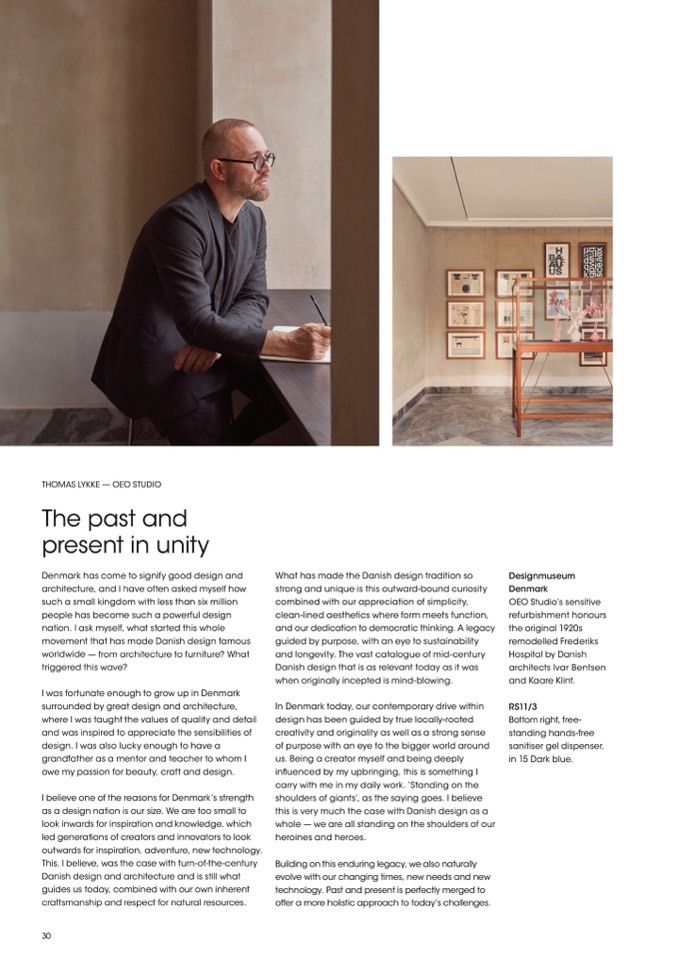
THOMAS LYKKE — OEO STUDIO
The past and
present in unity
Denmark has come to signify good design and
architecture, and I have often asked myself how
such a small kingdom with less than six million
people has become such a powerful design
nation. I ask myself, what started this whole
movement that has made Danish design famous
worldwide — from architecture to furniture? What
triggered this wave?
I was fortunate enough to grow up in Denmark
surrounded by great design and architecture,
where I was taught the values of quality and detail
and was inspired to appreciate the sensibilities of
design. I was also lucky enough to have a
grandfather as a mentor and teacher to whom I
owe my passion for beauty, craft and design.
I believe one of the reasons for Denmark’s strength
as a design nation is our size. We are too small to
look inwards for inspiration and knowledge, which
led generations of creators and innovators to look
outwards for inspiration, adventure, new technology.
This, I believe, was the case with turn-of-the-century
Danish design and architecture and is still what
guides us today, combined with our own inherent
craftsmanship and respect for natural resources.
What has made the Danish design tradition so
strong and unique is this outward-bound curiosity
combined with our appreciation of simplicity,
clean-lined aesthetics where form meets function,
and our dedication to democratic thinking. A legacy
guided by purpose, with an eye to sustainability
and longevity. The vast catalogue of mid-century
Danish design that is as relevant today as it was
when originally incepted is mind-blowing.
In Denmark today, our contemporary drive within
design has been guided by true locally-rooted
creativity and originality as well as a strong sense
of purpose with an eye to the bigger world around
us. Being a creator myself and being deeply
influenced by my upbringing, this is something I
carry with me in my daily work. ‘Standing on the
shoulders of giants’, as the saying goes. I believe
this is very much the case with Danish design as a
whole — we are all standing on the shoulders of our
heroines and heroes.
Building on this enduring legacy, we also naturally
evolve with our changing times, new needs and new
technology. Past and present is perfectly merged to
offer a more holistic approach to today’s challenges.
Designmuseum
Denmark
OEO Studio’s sensitive
refurbishment honours
the original 1920s
remodelled Frederiks
Hospital by Danish
architects Ivar Bentsen
and Kaare Klint.
RS11/3
Bottom right, free-
standing hands-free
sanitiser gel dispenser,
in 15 Dark blue.
30

